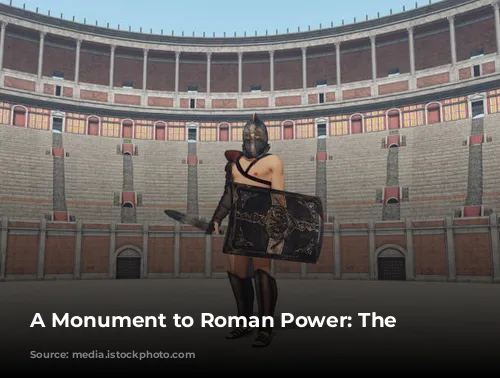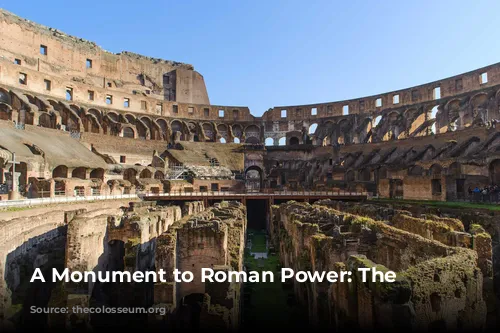The Colosseum stands as a towering testament to the architectural genius of the Roman Empire. This immense amphitheater, the largest in the world, has endured centuries of hardship, including fires, earthquakes, and neglect, yet it still stands today, a symbol of Roman resilience.
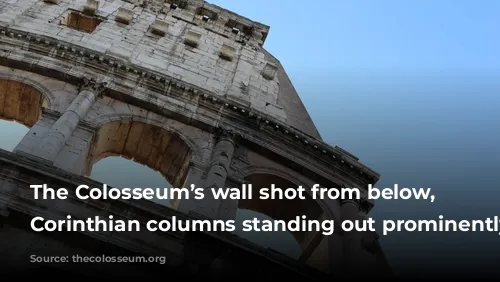
A Flavian Undertaking
The Colosseum was constructed between 70 and 80 AD during the reign of the Flavian Emperors, Vespasian, Titus, and Domitian. It was originally called the Amphitheatrum Flavium in honor of these emperors.
The construction of the Colosseum was a populist move by Vespasian, who sought to win back the favor of the Roman people after the turbulent reign of Nero. The amphitheater was built on the site of a man-made lake created by Nero for his extravagant palace, the Domus Aurea.
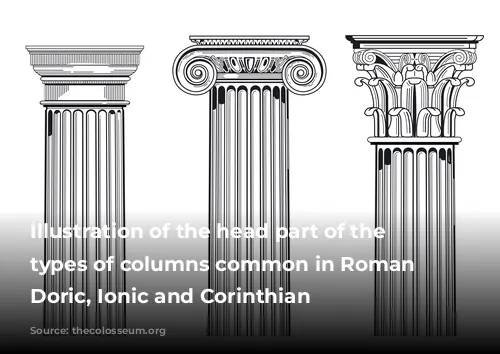
A Legacy of Labor
The majority of the labor for the construction of the Colosseum was provided by Jewish slaves who were captured during the first Jewish-Roman war. Their forced labor played a significant role in the creation of this architectural marvel.

A Colossal Structure
The Colosseum was designed as an oval-shaped building with a northwest-to-southeast orientation. Its impressive dimensions are almost twice as long and one and a half times as wide as a modern football field.
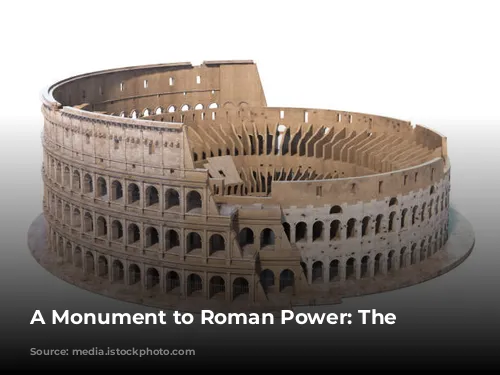
Built to Last
The Colosseum was built from over 100,000 cubic meters of travertine stone, a type of limestone quarried near modern-day Tivoli. The Romans also used a vast amount of cement, bricks, and tuff blocks.
The massive blocks of stone were held together by over 300 tonnes of iron clamps. These clamps were later scavenged for their metal, leaving behind visible pockmarks on the Colosseum’s walls.
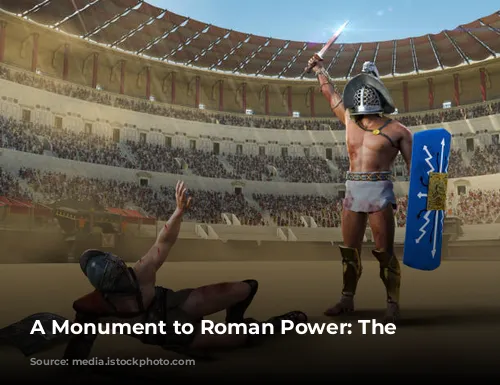
A Symbol of Roman Might
The Colosseum was conceived as a symbol of Rome’s power and grandeur. At the time of its completion, it was the most complex man-made structure in the world, towering nearly 50 meters high – a breathtaking sight in an era of mostly single-story buildings.
The white travertine stone used in its construction would have gleamed brightly in the sun, inspiring awe in all who beheld it. The Colosseum’s impact on ancient Romans would have been similar to seeing the Empire State Building for the first time today.
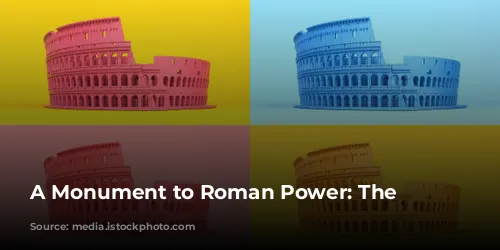
A Symphony of Architectural Styles
The Colosseum showcases the three main architectural orders of ancient Rome. The ground floor features Tuscan columns, a Roman variation of the austere Greek Doric style. The second floor is adorned with slightly more elaborate Ionic columns, while the third floor displays the intricate Corinthian style.
The stylistic complexity of the Colosseum increases from bottom to top, creating a visually stunning effect. Each half-column supports an arch, a total of 80 arches forming the exterior perimeter of the building. These arches are largest on the ground floor, and slightly smaller on the upper floors.
The fourth floor, however, is not constructed of arches and columns. Instead, it features flat panels that were once decorated with carvings and insets of azurite and bronze.
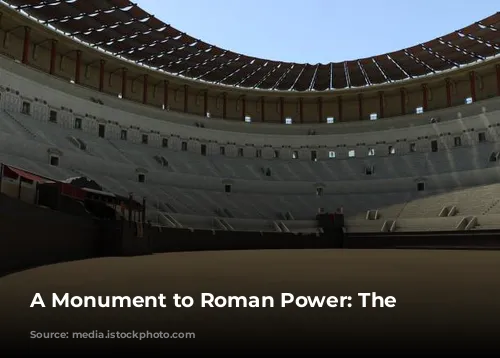
Gates to Triumph and Tragedy
The Colosseum had two main entrances: the Porta Triumphalis on the northwestern side, used for triumphal processions and the entry of gladiators. The Porta Libitinaria on the southeastern side served as the exit for the bodies of those who perished in the arena.
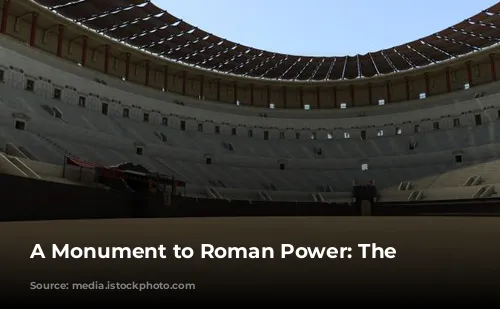
The Heart of the Spectacle: The Arena
The Colosseum’s most distinctive feature is the arena – the stage for gladiatorial combat, animal hunts, and other spectacles. It measured 83 meters in length and 48 meters in width.
The arena floor was made of wooden panels covered with sand. Hidden trap doors allowed for the introduction and removal of scenery and special effects. The arena was surrounded by a 10-foot wall that led to the first level of seating.
The arena wall was made of red and black stone blocks, creating a stark contrast with the rest of the building and mirroring the drama that unfolded on the arena floor.
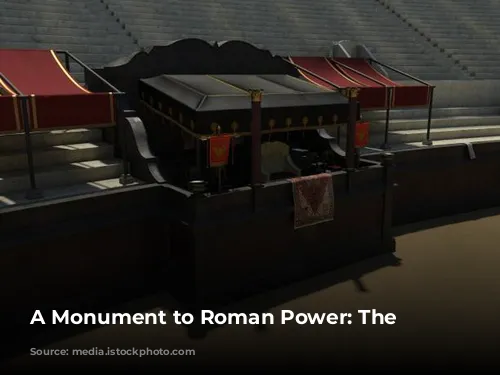
A Seat for Every Roman
Surrounding the arena were the terraces or bleachers, collectively known as the cavea. The cavea was divided into three tiers that reflected the social hierarchy of Roman society.
The podium, the lowest tier, was reserved for the highest-ranking Romans, including senators and officials. The gradatio, the middle tier, housed citizens of lower social standing. The porticus, the top tier, was occupied by the less affluent citizens of Rome.
The seating was made of travertine stone, with each seat measuring approximately 40 centimeters wide. Wealthier spectators often brought cushions for comfort. It is estimated that the Colosseum could hold up to 80,000 spectators.
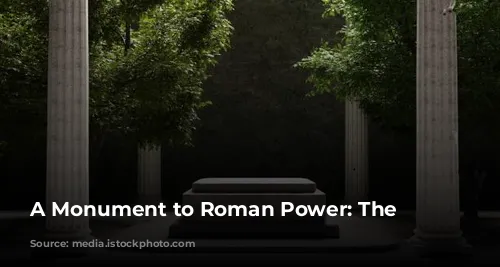
Access and Egress: The Vomitoria
The cavea was also divided horizontally by access points. Scalaria (stairs) led to the stands, while vomitoria – passages leading to the exterior – were used for quick entry and exit. Contrary to popular belief, the vomitoria were not for vomiting but for quickly “spewing forth” large numbers of spectators.
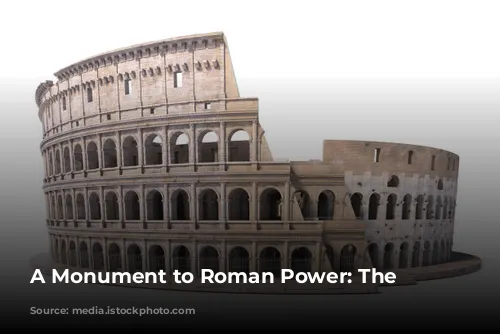
The Secrets Beneath: The Hypogeum
While the arena was the most visible feature of the Colosseum, the hypogeum, its underground area, played a critical role in the spectacle.
The hypogeum was a network of tunnels and chambers distributed over two levels, where gladiators and animals were kept before entering the arena.
This subterranean network was not part of the original design but was added later by Emperor Domitian. Eighty vertical shafts connected the hypogeum to the arena above, allowing gladiators and animals to be quickly raised to the surface.
Some of these shafts incorporated hegmata, large moving platforms used to transport heavy animals like elephants. The hypogeum was also connected to the outside world by a network of underground tunnels that led to the gladiators’ barracks and nearby stables.
The Colosseum also featured a private access tunnel for the Emperor, allowing him to enter and exit the building discreetly, avoiding the crowds.
The construction of the hypogeum made it impossible to flood the arena for naumachia (mock naval battles). Two naumachia were held before the hypogeum was constructed.
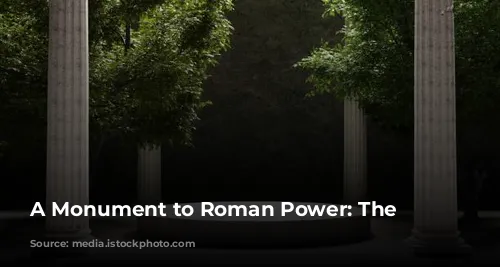
A Legacy of Entertainment
The Colosseum, with its gladiatorial combat, animal hunts, and other spectacles, served as a powerful symbol of Roman society and a testament to the Roman love of entertainment. It has endured for centuries as a testament to Roman engineering and architecture, inspiring awe and wonder in all who witness its grandeur.

